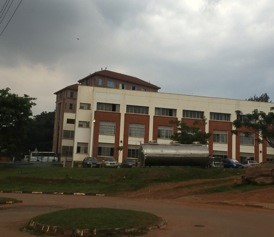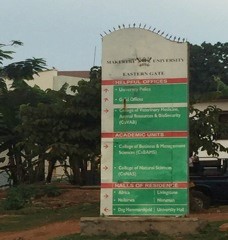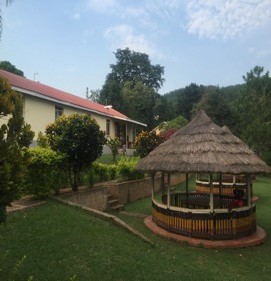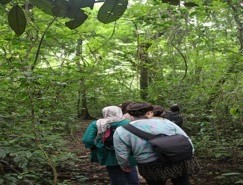Please note: this is a translation of the blog post published on 3rd December.
Desde mediados de octubre de 2018, más de 7.000 centroamericanos han están recorriendo el trayecto a la frontera de EEUU a pie y en vehículos sobrecargados. Han viajado juntos en la denominada caravana de migrantes desde el Triángulo Norte (Honduras, Guatemala, El Salvador). Aquí usamos la palabra migrante una vez y con serias reservas. Las palabras importan y la semántica en torno a la caravana esconde y permite discursos anti-migración discriminatorios (por ejemplo yuxtaponiendo la necesidad de prevenir la migración económica al derecho a protección de solicitantes de asilo ‘legítimos’). Este desplazamiento masivo de personas ha reavivado la atención sobre las vulnerabilidades que empujas a los centroamericanos a un viaje peligroso en busca de una vida más digna y segura. En este blog buscamos reflexionar sobre algunos de los desafíos en materia de salud a los que han afrontado, afrontan y podrían seguir afrontando en el camino.

Fanny Cortés, de 23 años, lleva a su hija, Escarlett, de dos años, mientras que su compañero, Jonny Ramírez, de 22 años, lleva la única maleta con las pertenencias de la familia. La pareja comenzó su viaje en San Pedro Sula. Crédito de la foto: Simone Dalmasso, Plaza Pública “
Breve Contexto en Centroamérica
Centroamérica es una región hermosa y diversa entre México y Colombia. Aunque pequeña en extensión, tiene una gran densidad de población y diversidad etno-lingüística. La región, con una larga historia de conflicto armado, autoritarismo y política excluyente, fue ‘pacificada a finales de los 80 y 90 con la desmovilización de combatientes guerrilleros y un proceso de democratización de sus regímenes militares. Sin embargo, la violencia sigue desenfrenada, constituyendo uno de los muchos desafíos de salud que conducen al desplazamiento y afectan a los que se quedan.
La mayoría de centroamericanos de la caravana viene de El Salvador, Honduras y Guatemala donde los niveles de homicidio llevan décadas a niveles de ‘epidemia’. Estos países son el 2º, 4º y 17º más violentos del mundo, respectivamente. La tasa de muertes violentas en los tres países llega a 99,7 (El Salvador), 67,7 (Honduras) y 32,7 (Guatemala) por 100.000 habitantes. En este blog, nos enfocamos en Guatemala, principalmente porque el país guarda un lugar especial en nuestro corazón, pero sobra decir que las circunstancias son insostenibles en toda la región.
Salud (y otros) desafíos en casa
En Guatemala la malnutrición y la violencia son los factores de riesgo de muertes prematuras más importantes. La malnutrición es endémica, 50% de ninos menores de 5 sufren retraso en el crecimiento, mientras el 28% de ninos en edad escolar tienen sobre peso y la obesidad en adultos va al alza con estimaciones de que un tercio de la población tendrá obesidad en 2025.
Infecciones prevenibles agudas de las vías respiratorias bajas son la mayor causa de muerte. Sin embargo, enfermedades no-contagiosas, como las cardiovasculares, cánceres y diabetes son comunes también, causando aproximadamente un 59% de las muertes totales, asociadas con malas condiciones de vida y acceso insuficiente a estilos de vida saludables.
La brecha entre la población rural y urbana tiene un impacto sustancial sobre la salud. Entre lo más preocupante está el hecho de que los el estado de salud o el acceso a la sanidad están muy asociados con la etnicidad. La población indígena sufre tasas desproporcionadas de pobreza, la destrucción del ambiente con macroproyectos desarrollistas (presas hidroeléctricas o minería), la falta de acceso a servicios públicos y barreras lingüísticas añadidas.
El Estado históricamente ha fracasado a la hora de proveer servicios básicos para superar estos desafíos. Guatemala tiene la recaudación fiscal (en % del PIB) más baja de toda América Latina y es el tercer país con menor gasto social (en % del PIB). Es así que los servicios de salud están infra-financiados de manera crónica, lo cual lleva a repetidas y largas huelgas de personal sanitario por su bajo salario (a veces impago), la más reciente desde agosto de 2018.
Desafíos de salud en el trayecto
Este no es el primer desplazamiento masivo en Centroamérica y la situación de los miles de refugiados tampoco es única. Con frecuencia, los centroamericanos arriesgan sus pertenencias, integridad física e incluso su vida en el trayecto hacia el norte. Emprender el camino en grupos pequeños, organizados por coyotes (traficantes), permite avanzar sin ser detectados. Sin embargo, expone a los refugiados a ser víctimas de violencia o abuso sexual, a que los estafen los coyotes o que los retengan contra su voluntad como esclavos modernos.
Desplazarse en un grupo grande probablemente ha permitido reducir la vulnerabilidad de los refugiados, que no han tenido que ponerse en manos de coyotes. El tamaño del grupo ha provocado actos de solidaridad emotivos, como la movilización de organizaciones de derechos humanos mexicanas para negociar un tránsito seguro a través de cordones policiales en la ruta. Aun así, la salud de muchos se ha deteriorado dadas las condiciones durante el trayecto: deshidratación, quemaduras severas por la exposición al sol, ampollas afectan a personas de todas las edades. Los niños sufren golpes de calor e infecciones respiratorias agudas y se ha documentado la muerte de dos adultos al caer de vehículos sobrecargados. La dureza de las condiciones ha podido con los miles que han decidido regresar al país de origen.
Desafíos de salud en el destino
A finales de noviembre, los refugiados encaminados a EEUU fueron recibidos en la frontera con gas lacrimógeno. La cobertura mediática de la ‘caravana’ se ha enfocado principalmente en la reacción de EEUU. El presidente estadounidense ha securitizado el problema, azuzando el miedo a una frontera insegura, migración masiva sin control y la llegada en masa de criminales peligrosos.
Como cabe esperar, la evidencia contradice la imagen que el presidente de EE. UU. intenta difundir. Mientras el número de solicitantes de asilo (lo que podríamos llamar, con reticencias, migración ‘legal’) va en aumento, la migración ‘irregular’ (medida en el número de detenciones en la frontera EE.UU. – México) está en mínimos históricos. Asimismo, el presidente actual ha solicitado eliminar las partidas presupuestarias de cooperación al desarrollo al Triángulo Norte, afirmando que estos países generan necesidades humanitarias, en vez de satisfacerlas. De nuevo, esta postura da una impresión errónea de que la ayuda humanitaria es malversada o ineficaz. De hecho, Guatemala y El Salvador encabezan la clasificación de crisis humanitarias ‘olvidadas’ dada la magnitud de las necesidades, la capacidad para afrontarlas, atención mediática sobre la crisis y la cantidad de ayuda disponible per cápita.
La medida en la que los centroamericanos que lleguen a EE. UU. disfrutarán de mejor salud allí dependerá de sus medios financieros y su status legal. La población latina en EE. UU. tiene un mayor riesgo de indicadores de salud negativos y generalmente son una población con menos cobertura sanitaria, aunque esto varía según el estado. Los problemas de salud mental asociados con las dificultades del trayecto, experiencias de abuso antes del desplazamiento y el estrés asociado con empezar una nueva vida en EE.UU también es probable que afecten sustancialmente a su bienestar.
Ya se ha establecido una respuesta humanitaria a la crisis de desplazamiento de Centroamérica. Sin embargo, la falta de intervenciones efectivas y sostenibles en la región viene de largo. La caravana es un conjunto de poblaciones desplazadas forzadas que afrontan desafíos que ponen en riesgo su salud, sus medios de vida y supervivencia. A corto plazo, deberían establecerse medidas de protección para los que huyen de la miseria. Para los que sigan desplazados, el acceso a servicios humanitarios de transporte, albergues, agua, saneamiento e higiene (WASH) y nutrición es esencial. Se debería garantizar el acceso a protección legal y un debido proceso para los solicitantes de asilo como exige el derecho internacional (que por ahora, al menos en papel, rige en EE.UU). A largo plazo, urge un reconocimiento de que la mejora de los sistemas de salud requiere inversión, lo que esperamos se traduzca en acciones urgentes de los pueblos y gobiernos centroamericanos.
Evelyn Balsells es doctoranda de la Universidad de Edimburgo. Su investigación se centra en la carga global de enfermedades infecciosas y está interesada en temas que afectan a poblaciones vulnerables y contextos humanitarios. Daniel Herrera Kelly es doctorando de la Facultad de Relaciones Internacionales de la Universidad de St Andrews, donde investiga la violencia colectiva en Centroamérica. Las opiniones en este artículo son a título personal y no representan los puntos de vista de las instituciones a las que están afiliados.











 Latest tweets
Latest tweets